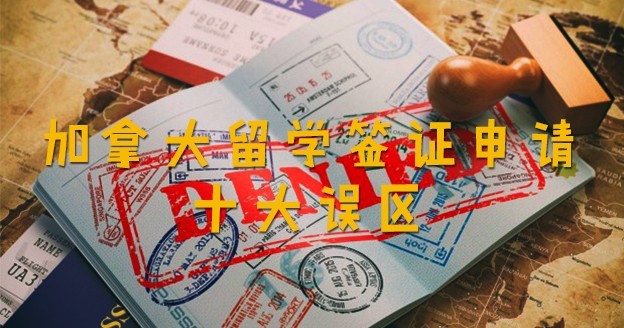The rising trend of young students studying abroad
Young students studying abroad refer to students in high school or younger. In recent years, sending children abroad to study is getting more and more common. These numbers draw attention to China as there has been a wave of young Chinese students being sent to study abroad. According to data collected by UtoCanada the number of young students studying in Canada has increased by 36% compared with last year. Sending children to Canada to study high school has obvious advantages, and naturally has become one of the most popular study-abroad destinations.
Summary of the costs of studying in Canada
When considering sending children to high school in Canada, in addition tohow to apply for a Canadian student visa before leaving your home country, the first question for many parents is how much money they need each year on average.
According to UtoCanada’s years of experience in the industry, our data shows that sending children to high school in Canada will cost about $20,000-48,000 CAD per year (tuition + living expenses), equivalent to 120,000-250,000 RMB. In other words, if a student lives economically, the cost will be at about $20,000 per year, while a more lavish lifestyle would cost about $48,000 per year. Let’s have a look at the factors that affect costs:
- The province you choose to study in (living in Ontario and BC is more expensive)
- Public high school or private high school (private high school costs a lot)
- Personal spending habits (some teenagers love splurging on famous brands and are used to living lavish lifestyles)
So why are Canadian high schools favoured by so many Chinese parents?
Why is going to high school in Caanada a popular choice?
This rising trend of teenagers studying abroad at an early age is naturally influenced by the increase in income of Chinese adults and their emphasis on children's education. But why is Canada so popular? Here is a summary of reasons.why more and more Chinese parents send their children to high school in Canada::
- Teaching Quality. Canadian and American high school education both share the common North American education system, and their teaching quality is top-notch. The credentials obtained from the schools are recognized in most universities in North America and in the world.
- The cost of studying abroad in Canada is lower than other countries such as Europe and the United States. The total cost of studying in Canada for a year is about 120,000-250,000 RMB, while it may cost about 160,000-350,000 RMB in Europe, the United States and other countries.
- Better access to top Canadian universities. It is much easier to apply to one of Canada's top universities after finishing high school in Canada than it is to apply directly from your home country. Because Canadian high schools are credit-based, students can start taking university preparatory courses in their senior year. Therefore, adapting to university will be much easier. In addition to studying, there are many clubs and social activities in high school that can allow students to participate and learn about Canadian culture as soon as possible, while improving their range of abilities.
- Prepare for immigration to Canada. Canada is a country of immigrants. Immigration policies in recent years have also provided a lot of convenience for international students to apply. After completing higher education in Canada, students can get a three-year work permit, which allows you to legally stay in Canada for three years and have the opportunity to apply to become a Canadian permanent resident. Although going from a high school student to an permanent resident in Canada is a long process, Canada's immigration policy is relatively lenient compared to the US and Europe.
- Safe environment. Canada is known for being a safe country to live in, which eases the minds of parents of younger children and girls. Unlike the U.S., where crime is reported every day, Canada is one of the 10 countries with the lowest crime rateaccording to statistics; with its strict firearms regulation, the inclusive multicultural environment, the friendliness of the main social class, and decent social welfare. On the other hand, some may jokingly explain, "Canadian summers are too short and too beautiful. The people will either be busy travelling on vacation or just enjoying the sun. There is no time for crime. Also, the winters are too cold and too long. People hide in their heated homes. When would they ever find time to commit crimes?"
- Friendly locals. While xenophobia is getting worse in both the United States and Europe, especially in the United States after Trump was elected as president, Canada, on the other hand, still holds a diverse population of different ethnicities. The local people are warm and friendly, and are more tolerant towards foreign newcomers.
 Since the cost is the main concern for everyone reading this article, let's take a look a breakdown and analyze the details of various costs of studying in Canadian high schools.
Cost of living for international high school students
Living expenses for high school students vary from province to province, but roughly adds up to $8,000 - $18,000 per year. What we mean by living expenses here refers to all expenses other than study. This includes monthly homestay payments (or rent + meals), custodian fees (minors must pay), transportation costs, mobile phone bills, and more.
Let's analyze the details of living expenses here.
- Medical insurance: the law requires students to purchase medical insurance when studying in Canada, so some schools may require international students to pay for medical insurance together with their registration fee. Medical insurance costs around $800 a year. In addition, purchasing text books for school costs about $200 to $400.
- 交通费用:这也是个体差异较大的一项。如果没有买车的话,大约在500-1500加币/每年;如果想要开车,除了买车和考驾照的费用,每年就又多出了3600-6000的费用车保险+油费)。如果住在小镇或是小城市,高中生的车保险会比较便宜(大约80-200加币/月),如果住在像多伦多这样的大城市,高中生的车保险就贵一些(大约300-500加币/月).
- Custodian services: $1200-2400 CAD/year. Canadian law requires that both local and international students have a legal custodian who is a Canadian permanent resident or citizen. Many high school students who have just arrived in Canada have no relatives here. In this case, the fastest way is to find custodian for your child is to go through a study-abroadagency. On the other hand, if you have friends or relatives in Canada, you will be able to save some money.
- Room and board:There are two main types of student accommodation in Canada:
On-campus dormitories: If you choose to let your child live in a dormitory on campus (usually only larger private high schools provide accommodation), then you do not have to spend extra on off-campus accommodation. The on-campus dormitories provide students with two meals – mainly Western food such as pizza, sandwiches, burgers, and salads. The cost of accommodation for a year is around $60,000-20,000 CAD, and the school will charge it along with the tuition.
Homestay: Most public high schools do not provide accommodation, so international students studying in public high schools need to rent a home off-campus or find a homestay family like most high school international students. Homestays provide students with three meals a day at a cost of $9,000-15,000 per year. In comparison, it is cheaper to share an apartment with roommates off-campus, which can save you about $2000/year. However, it is worth mentioning that finding a local host family is one of the best ways for foreign students to improve their English.之一。
Cost of private high school
 Private high schools in Canada are commonly much more expensive than public high schools. A small number of private high schools provide school dormitories, and such private schools charge high fees. For example, the annual cost of studying at Queen's Elite Academy of Canada is close to $50,000 CAD, which includes tuition, medical insurance, room and board, and other expenses. Other schools that do not provide accommodation have lower tuition fees. Most private schools charge tuition and health insurance fees of $10,000-30,000 per year. For example,The Duncan Academy in Toronto does not provide accommodation. Their tuition and health insurance costs total to $19,000 per year.
 Why are private schools more expensive? Private high schools have more money, so they have a clear advantage over public schools in terms of better qualified teachers, qualifications, education quality, curriculums, and school size. In addition, private high schools are usually quick to issue grades, so the process of getting into a prestigious university after graduating from high school is faster.
Cost of public high school
 Public schools in Canada are free for local students, and school funding comes mainly from community donations and government grants. Therefore, the majority of students in public schools are local students, and most public high schools do not provide accommodation.
For international students, public schools generally charge between $12,000-15,000 a year. For example, the tuition fee for schools under the Toronto District School Board (TDSB) high school is $14,000 (including health insurance).
 However, this is not the whole cost of studying abroad. If you choose a public high school, you will need to spend money on off-campus living expenses, which we have already discussed in the previous section.
Summary of high school expenses in Canada
 In Canada, there is a divide between public high schools and private high schools. For an international student, the total cost of studying in a Canadian high school is approximately $20,000-48,000 CAD per year (including tuition and living expenses), equivalent to 120,000-250,000 RMB.
- The total annual cost of going to a public high school is between $20,000-34,000. This specifically includes tuition ($12,000-15,000 a year), plus all other living expenses between $8,000-18,000 per year.
- The total annual cost of going to a private high school is between $21,000-48,000. This specifically includes tuition fees ranging from $ 13,000-30,000 per year, plus all other living expenses between $8,000-18,000 per year.














